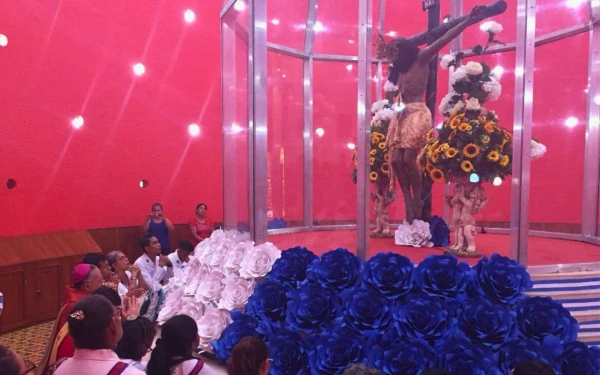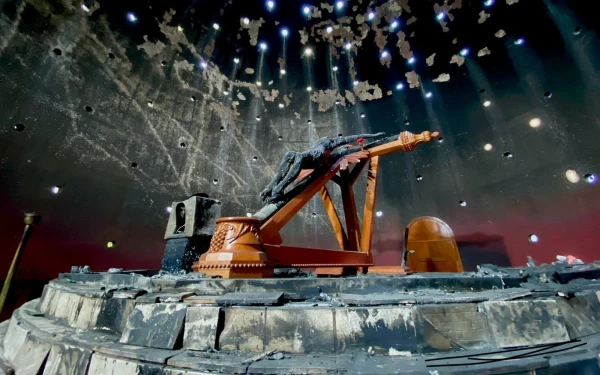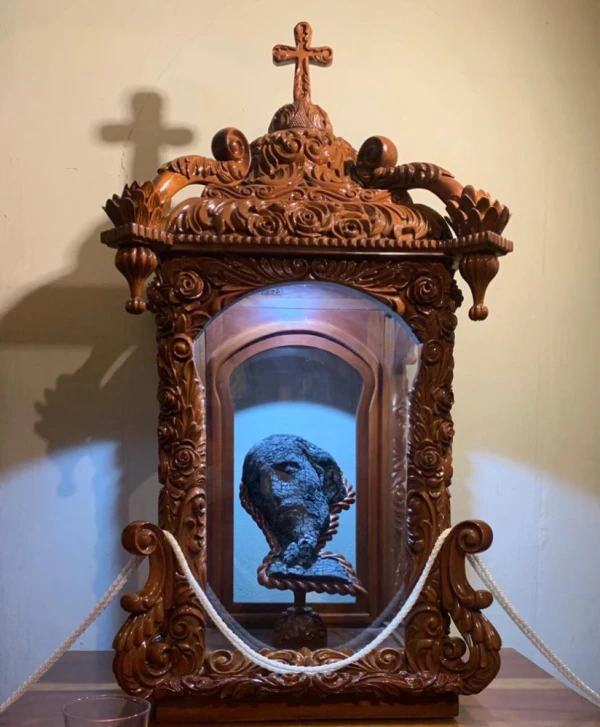Five years ago, the Chapel of the Blood of Christ in the Cathedral of Managua, capital of Nicaragua, suffered serious damage because of an attack. To date, the fire marks remain visible in the place.
On July 31, 2020, around 11:00 am (local time), according to witnesses, a hooded man entered the Cathedral and went to the Blood of Christ’s chapel, where he threw a Molotov bomb that sets part of the structure fire. As a consequence, the consecrated hosts that were in the chapel were also burned.
Receive the main news of ACI Press by WhatsApp and Telegram
It is increasingly difficult to see Catholic news on social networks. Subscribe to our free channels today:
At that time, the Archbishop of Managua, Cardinal Leopoldo Brenes, described the fact as “a planned act, very calmly.” “This was an act of terrorism,” he denounced.
On the other hand, the National Police ruled out the hypothesis of a deliberate attack. In one Press Conference on August 3He pointed out that the fire “was produced by a combination of physical and chemical elements that influenced the platform where” the venerated image is located.
Researcher and lawyer Martha Patricia Molina, in her report Nicaragua: a persecuted church, Where he gives an account of the various attacks that the Catholic Church has suffered in the country, he points out that the symbolism of the attack on a religious temple could “be interpreted as a terrorist act, especially if he sought to intimidate or attack the Catholic Church as an institution.”
Before and after
Before the fire, the image of the blood of Christ was erect and protected by a glass dome in the center of the presbytery, surrounded by floral and candle arrangements. On their sides they waved the flags of Nicaragua and the Vatican, framing a space of great solemnity. Intense red walls with built -in lights and wooden benches completed the enclosure.

Today the walls remain blackened and the floor retains the same tile. The crucifix, totally calcined and for years without face, lies half lying. Without chairs or ornaments, the space is closed and protected after a rusty gate that restricts access except special occasions.

Christ’s face was exhibited separately in a glass urn until June 30 was reinstalled in the image. On that occasion, Cardinal Brenes, said during the homily, according to the Local medium VOSTV: “Let’s go back to his sacred image and deposit all our confidence in his infinite love manifested on the cross,” he said.

About the blood of Christ
The image of the blood of Christ dates from the first half of the 17th century.
During his visit to Nicaragua in 1996, San Juan Pablo II entered the cathedral of Managua and packed for a few moments before the image of the blood of Christ.
In that visit, the “Padre Peregrino” stressed that the image of the blood of Christ “represents Jesus offering the Father on the cross all his blood and all his humanity, you have wanted him to be chaired by the risen Lord with the teaching of his victory over sin and death.”

